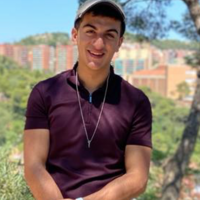Analysis of Anesthetic Depth with Processed EEG and NIRS
Neurocognitive abnormalities have been observed within infant patients undergoing general anesthesia, especially during cardiovascular and neonatal surgeries.This project explores the use of EEG (electroencephalography) and NIRS (Near Infrared Spectrocopy) to analyze the oxygen saturation and brain activity within infants during surgery. Throughout this project, the EEG and NIRS data of 53 patients are processed and analyzed using MATLAB to detect any frequencies of oxygen desaturations or abnormal brain activity. For each patient, their EEG and NIRS data is categorized into certain timestamps during the surgery including induction, start surgery, paralytic time, end surgery, and emergence.
Near infrared spectroscopy (NIRS) is a brain imaging method that measures light absorbance to calculate the cerebral tissue oxygen saturation (rSco2 ) within cardiac, neonatal, and pediatric patients. Using this method of measurement allows surgeons to detect when cerebral oxygen levels decrease therefore predicting when a neurologic injury may occur. In addition to this, electroencephalography (EEG) is a method that measures electrical brain activity using small, metal electrodes attached to the scalp. The EEG consists of four independent channels that may flat-line during a surgery therefore informing the surgeon of a potential neurologic abnormality.
For this project, I was in charge of creating scripts of code on MATLAB to process the data of the 53 patients. Prior to doing so, the baseline oxygen saturation of each patient needed to be calculated by averaging the first five oxygen saturation values of the patient. This baseline was then used to determine when the oxygen saturation was considered mild (11% below baseline), moderate (20% below baseline), or severe (30% below baseline). The time intervals corresponding to when the patients oxygen saturation dipped below these thresholds (greater than 3 minutes) was then retrieved and further processed. The time intervals corresponding to when the EEG channels flatlined (greater than 10 seconds) were also detected and recorded.
I would like to thank the PURM program, Dr. Ian Yuan, Dr. Anne Vernon-Grey, and all other mentors who supported me during the research process this summer and I am truly thankful for all the skills I have learned and gained throughout this entire experience!

Comments